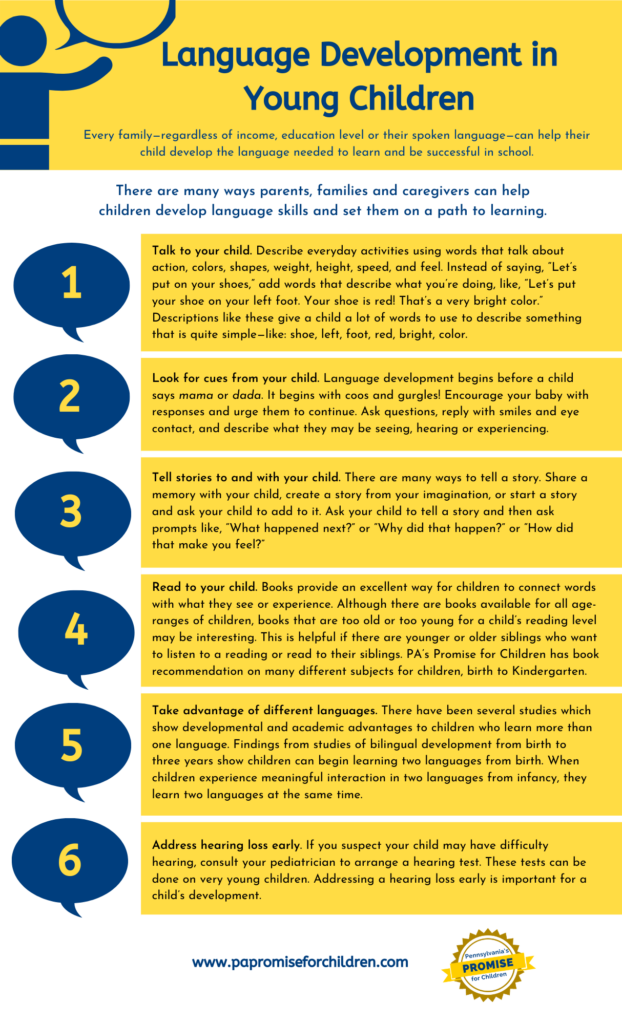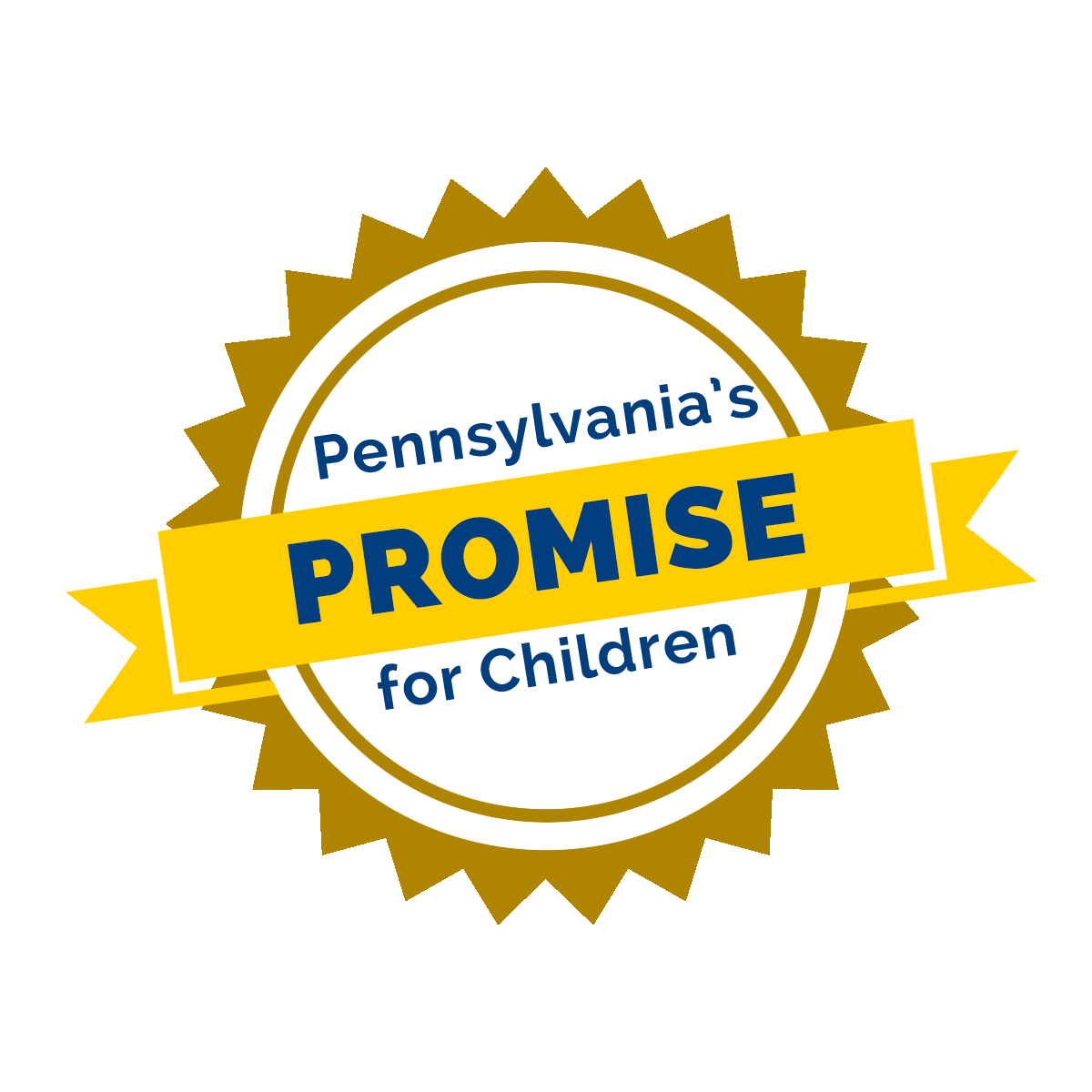Click here to download or print in English.
Click here to download or print in Spanish.
(Prints on 8.5 x 14 inch legal size paper.)


In 2013, Stanford University released a study showing a language gap in children living in families with different income levels. The study found “children of lower-income, less-educated parents typically enter school with poorer language skills than their more privileged counterparts. By some measures, 5-year-old children of lower socioeconomic status score more than two years behind on standardized language development tests by the time they enter school.” A delay in language development can impact the way a child learns, not only while young, but as they get older.
Every family—regardless of income, education level or their spoken language—can help their child develop the language needed to learn and be successful in school.
A child’s language development begins at birth, long before they can say words, or even understand the meaning of words. Their language development relies on parents, families and caregivers to provide the necessary tools and experiences which encourage what words they learn, and later, how they use those words and the way they communicate.
There are many ways parents, families and caregivers can help children develop language skills and set them on a path to learning.
- Talk to your child. Describe everyday activities using words that talk about action, colors, shapes, weight, height, speed, and feel. Instead of saying, “Let’s put on your shoes,” add words that describe what you’re doing, like, “Let’s put your shoe on your left foot. Your shoe is red! That’s a very bright color.” Descriptions like these give a child a lot of words to use to describe something that is quite simple—like: shoe, left, foot, red, bright, color.
- Look for cues from your child. Language development begins before a child says mama or dada. It begins with coos and gurgles! Encourage your baby with responses and urge them to continue. Ask questions, reply with smiles and eye contact, and describe what they may be seeing, hearing or experiencing.
- Tell stories to and with your child. There are many ways to tell a story. Share a memory with your child, create a story from your imagination, or start a story and ask your child to add to it. Ask your child to tell a story and then ask prompts like, “What happened next?” or “Why did that happen?” or “How did that make you feel?”
- Read to your child. Books provide an excellent way for children to connect words with what they see or experience. Although there are books available for all age-ranges of children, books that are too old or too young for a child’s reading level may be interesting. This is helpful if there are younger or older siblings who want to listen to a reading or read to their siblings. PA’s Promise for Children has book recommendation on many different subjects for children birth to Kindergarten.
- Take advantage of different languages. There have been several studies which show developmental and academic advantages to children who learn more than one language. Findings from studies of bilingual development from birth to three years show children can begin learning two languages from birth. When children experience meaningful interaction in two languages from infancy, they learn two languages at the same time.
- Address hearing loss early. If you suspect your child may have difficulty hearing, consult your pediatrician to arrange a hearing test. These tests can be done on very young children. Addressing a hearing loss early is important for a child’s development.
Resources:
Learning is Everywhere (PA’s Promise for Children): Everyday early learning activities that align with the Pennsylvania Early Learning Standard, including language, to help your child learn and grow.
Speech and Language Developmental Milestones (National Institute on Deafness and Other Communication Disorders): Baby’s hearing and communicative development checklist
Typical Speech and Language Development (American Speech-Language-Hearing Association): Articles on speech, language, how your child hears and talks, early identification of speech, language and hearing disorders and more.
10 Ways to Promote the Language and Communication Skills of Infants and Toddlers (Frank Porter Graham Child Development Institute)
Development of lnfants and Toddlers Who Are Dual Language Learners (Center for Early Care and Education Research)
Out of the mouth of babes (Knowable Magazine, Feb. 13, 2020): Learning a language is child’s play, but linguists are still trying to understand how children do it so easily.
